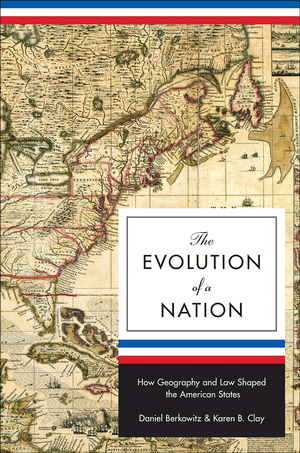Kevin R. C. Gutzman (Western Connecticut State University) offers the following overview:
Berkowitz and Clay say early on that, “The primary goal of this book … is to understand political and legal institutions,” because they assume that such institutions drive societies’ prosperity or poverty (pp. 3, 5). Particular factors that they consider are levels of political competition and judicial independence. Since levels of income are persistent, they posit that “conditions early in a state’s history may have played a formative role in shaping political and legal institutions.” Ultimately, they push their inquiry back as far as possible: to various environmental factors and to the legal traditions from which each state’s government descended.Here's Gutzman on "[o]ne novel element of the book": "its classification of states according to whether they ever were civil-law jurisdictions."
It turns out that the thirteen that were – the eight states on America’s southern periphery from California to Florida, plus Arkansas, Missouri, Illinois, Indiana, and Michigan – continue to bear distinguishing characteristics from the states that always had common-law systems (p.10). This is highly counter-intuitive, as some of those jurisdictions had civil law only very briefly and long ago. Yet, Berkowitz and Clay establish a clear correlation: state governments of the civil-law states have always had more dominant legislatures and weaker judiciaries than the other states. This relative weakness of judiciaries has manifested, and continues to manifest, itself in numerous ways.Read on here. The book's TOC and first chapter are available here.
